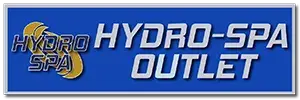In the realm of hot tub maintenance, the integrity of the pump is paramount to ensure optimal performance and longevity of your spa. Indications of a failing pump, such as unusual noises—whether they be grinding, screeching, or humming—reduced jet pressure, or persistent leaks, should not be ignored. These symptoms suggest internal issues ranging from a clogged impeller or a defective seal to motor failure, all of which compromise the pump’s efficacy. Addressing these signs promptly not only mitigates the risk of more extensive damage but also preserves the intricate balance of your hot tub’s ecosystem. As we explore the technicalities behind each sign, one must consider the broader implications of pump failure on the hot tub’s operational health. It’s crucial to incorporate hot tub repair strategies in routine maintenance to extend the lifespan and efficiency of your spa.
Identifying Common Pump Failures
To effectively diagnose hot tub pump issues, it is essential to recognize the most common types of failures, which include motor malfunctions, impeller damage, and seal leaks. Understanding these failures not only fosters a sense of community among hot tub owners but also empowers you to make informed decisions about your equipment.
Motor malfunctions often manifest as humming sounds or complete silence when attempting to activate the pump. This could indicate a seized motor or a failure in the start capacitor. A multimeter test can confirm electrical continuity issues, which are pivotal in diagnosing motor health.
Impeller damage is another prevalent issue, typically resulting from debris blockage or prolonged wear. Symptoms include reduced water flow and abnormal noises during operation. Visual inspection can reveal broken or worn impeller blades, necessitating prompt replacement to restore optimal performance.
Seal leaks, marked by water leakage around the pump housing, compromise the integrity of the entire system. These leaks usually stem from a degraded seal, which can deteriorate due to chemical imbalances in the water or overuse. Identifying and replacing a faulty seal early can prevent more severe damage, ensuring that you and your fellow enthusiasts can continue to enjoy the communal pleasure of a well-maintained hot tub.
Maintenance Tips for Longevity
Regular maintenance significantly extends the lifespan and efficiency of your hot tub pump. As part of a community of hot tub enthusiasts who value longevity and optimal performance, understanding how to maintain your equipment is crucial. Incorporating hot tub repair into your routine maintenance practices ensures that your spa remains in top condition, allowing for consistent enjoyment and preventing costly repairs down the line.
Here are three key maintenance practices that should be part of your routine:
1. Regular Filter Cleaning: Ensure that your hot tub’s filter is cleaned every two to four weeks, depending on usage. A clean filter prevents debris from reaching the pump, which can reduce its workload and prevent damage.
2. Chemical Balance Monitoring: Maintaining the correct chemical balance in your hot tub is essential for preventing scale and corrosion, which can significantly impair pump function. Test water pH, alkalinity, and sanitizer levels at least twice a week and adjust as necessary.
3. Seasonal Inspections: At the start and end of each season, conduct a detailed inspection of the pump and associated components. Look for signs of wear, such as leaks, unusual noises, or vibrations. Early detection of potential issues can prevent costly repairs and extend the pump’s service life.
Adhering to these practices will not only keep your hot tub pump running efficiently but will also foster a sense of pride and belonging within the hot tub owner community through a shared commitment to care and quality.
Read more:
Hot Tub Repair for Beginners: Easy Steps to Keep Your Spa Clean
